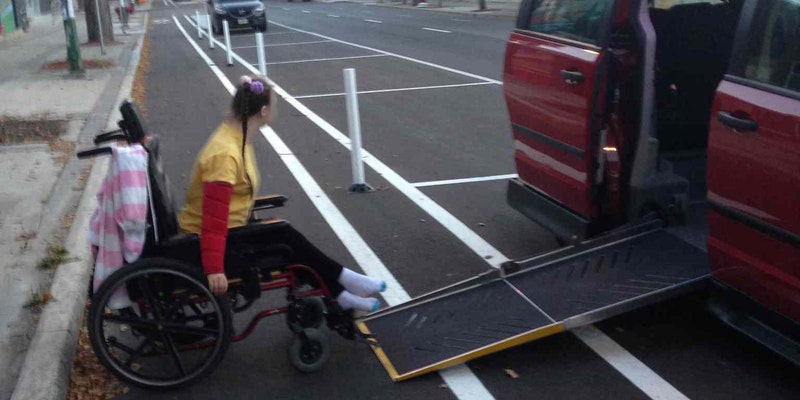In 2014, Advocates with Walk San Francisco, the San Francisco Bicycle Coalition, and the Senior and Disability Work Group of the Vision Zero Coalition, toured some of the city's new protected bike lanes. The new facilities were better for keeping cyclists safer but posed new risks for people with mobility issues. "The tour enabled us to document why the facilities weren’t working," explained Walk San Francisco's Jodie Medeiros, during a webinar on Wednesday morning on "Building Protected Bike Lanes That Work for Pedestrians."
The webinar documented Walk San Francisco and the SFMTA's efforts to advance designs for protected bikeways that also work safely for people in wheelchairs, seniors who use walkers, and other people who may have challenges getting across the bike lane to the curb. As Walk San Francisco documented in "Getting to the Curb," a guide it released last November, early protected bike lane designs had specific problems, such as buffers that are too narrow for people in wheelchairs. They now have to cross "...a lane of bike traffic and a greater distance to get to the curb," added Medeiros, showing a bike lane configured as the one seen in the lead image. "There's just no accessible way to reach the curb...this [configuration] is frequent."
Another problem is even when the buffer is wide enough for a wheelchair, and a curb ramp is available, sometimes the placement of vertical posts (see below) make it impossible for someone to get to the sidewalk from a loading zone.
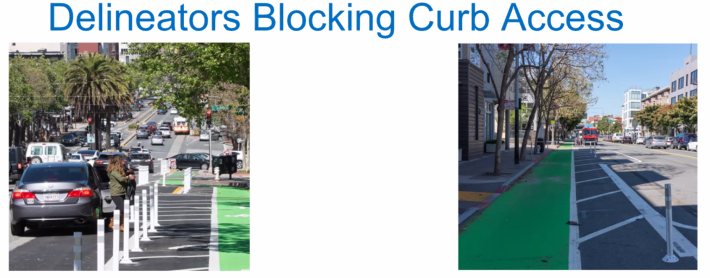
"We're now leaving gaps in the delineators, creating 20-foot spaces to allow easy movement from loading to curb," explained SFMTA's Michael Jacobson, who co-presented at the webinar (see above image), "but still giving a visual guide not to pull all the way into the bike lane."
Given Mayor London Breed's directive to build 20 miles of protected bike lanes in the next two years, the agencies and advocates are hoping to get these more advanced designs into the toolbox as soon as possible. One important change is to make sure people don't have to go all the way to the corner to access the curb. The plan is to add well-designed midblock loading zones with crossings that make someone going from paratransit or a car to the curb as visible as possible. The city is using paint and reflective markings to make it clear to cyclists that the midblock access area is a potential conflict zone, as seen in the images below.
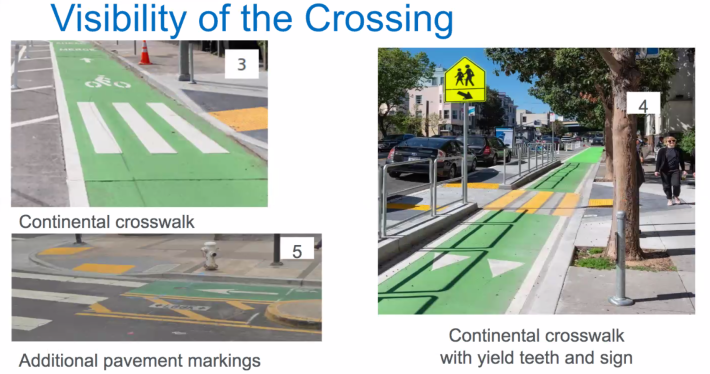
"We use two designs for mid-block curb access," said Jacobson. "One is an ADA-compliant mid-block curb ramp which is standard design for a 'quick build' project. But the preferred design is to raise the crossing from a raised loading zone, so wheelchairs don’t have to go down and up. We use that in longer-term projects." The raised boarding island and crossing, he added, is more expensive because of drainage issues.
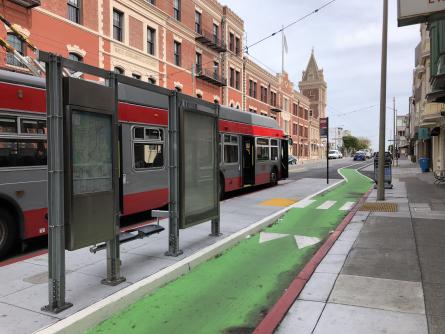
More expensive, but it's the preferred design, as seen above at a bus boarding island at North Point and Polk. By making the bike lane come up to the same level as the island and sidewalk, disabled people don't have to struggle to go up and down to get to the sidewalk. It also raises the pedestrian or wheelchair user a bit higher, making them more visible to cyclists. And the physics of the ramp forces cyclists to slow down, as well as further reminding them to be on the alert for people crossing.
In other configurations, the bike lane narrows and has additional stripes and signs to encourage cyclists to slow at this potential conflict point, as seen below at the loading zone for the San Francisco Friends School and Millennium School on Valencia:
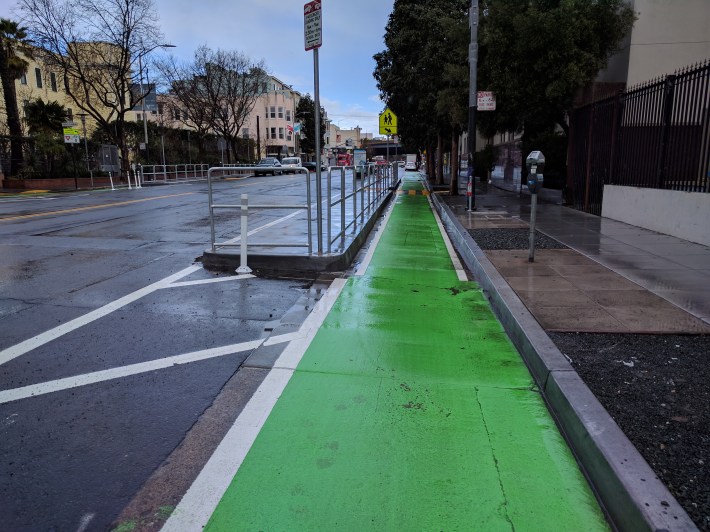
"These applications are universal and also help children," said Jacobson.
As Medeiros stressed in the webinar, seniors and the disabled are especially vulnerable in traffic collisions, so it's important to take extra steps to make sure they can safely get to the curb.
Of course, many of the challenges outlined in the webinar have been worked out in other countries--with one major difference. In the Netherlands, rather than looking at a cycle track as an obstacle to be crossed, they are designed so seniors, disabled people, and children can use them too. This video from the BicycleDutch blog explains how:
To review some of the design options explained in the webinar, be sure to check out Walk San Francisco's illustrated "Getting to the Curb" guide.
